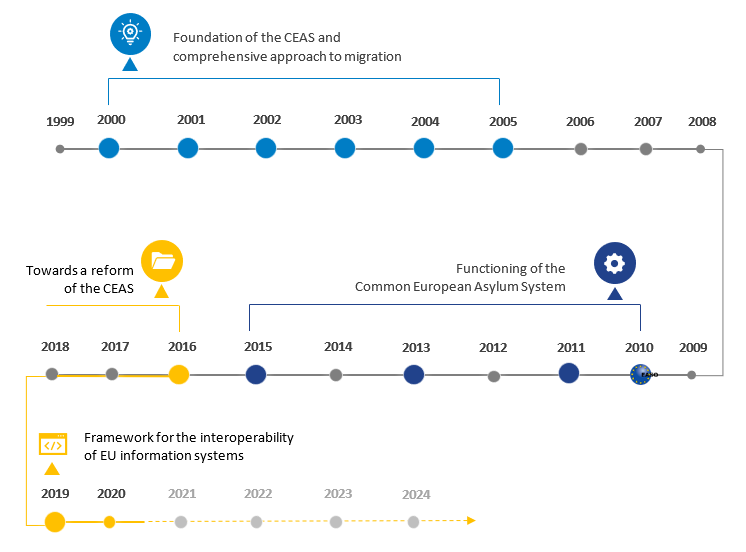| Section 2 presents an overview of the Common European Asylum System (CEAS) and the latest developments in its evolution. It covers key asylum-related legislative and policy developments at the EU level, the implementation of EU policy initiatives under the European Agenda on Migration and an overview of jurisprudence by the Court of Justice of the EU (CJEU) in the area of international protection. Issues related to managing migration and asylum remained high on the EU policy agenda, and progress was achieved in many areas of practical cooperation across EU+ countries in 2019. |

Previous |
............... |
Home |
................... |
|
Next |

